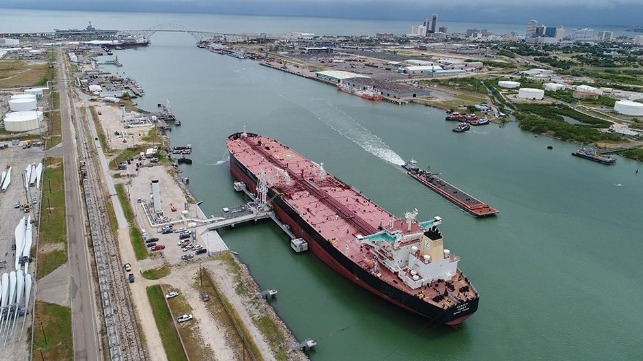Port of Corpus Christi Plans Green Hydrogen Production Facility

The Port of Corpus Christi, Teas is joining a growing list of ports around the globe seeking to become part of the emerging hydrogen infrastructure to support the maritime and other industries. The port plans to develop renewable energy infrastructure to support the production of green hydrogen and potentially to provide renewable power directly to the port and its customers.
The Port of Corpus Christi Authority entered into a Memorandum of Understanding with Ares Management, a California-based alternative investment manager, which through its Infrastructure and Power strategy provides flexible capital across the climate infrastructure, natural gas generation, and energy transportation sectors.
The agreement outlines preliminary provisions for a renewable energy and clean fuel hub to be developed on port property. They envision the development of solar facilities, battery storage facilities, and an electrolyzer for the production of green hydrogen. The hydrogen produced would be clean fuel that could be used in existing high carbon intensity industries and processes, such as refining, ammonia and fertilizer productions, and thermal power generation. Extensive R&D is also underway around the world on developing hydrogen as a marine fuel.
“As the Energy Port of the Americas, we are working to find new ways to operationalize our commitment to decarbonization. This project not only brings a new type of economic activity to our gateway, but it will directly meet the needs of our current customers, many of whom use hydrogen in their production processes,” said Sean Strawbridge, Chief Executive Officer of the Port of Corpus Christi.
The first set of facilities in the energy will be made up of an up to approximately 210 MW solar project and an up to 840 MWh battery storage facility. These two facilities would be capable of powering an electrolyzer to produce approximately 9,000 MT of green hydrogen per year. The project would be designed with the possibility of expanding the facilities over time, including the optionality of providing renewable power directly to the port’s operations.
The nonbinding MOU defines a range of possibilities for the ownership and operation of the infrastructure assets. Development activities will commence immediately, with construction and operations of the different facilities expected over the next several years.
